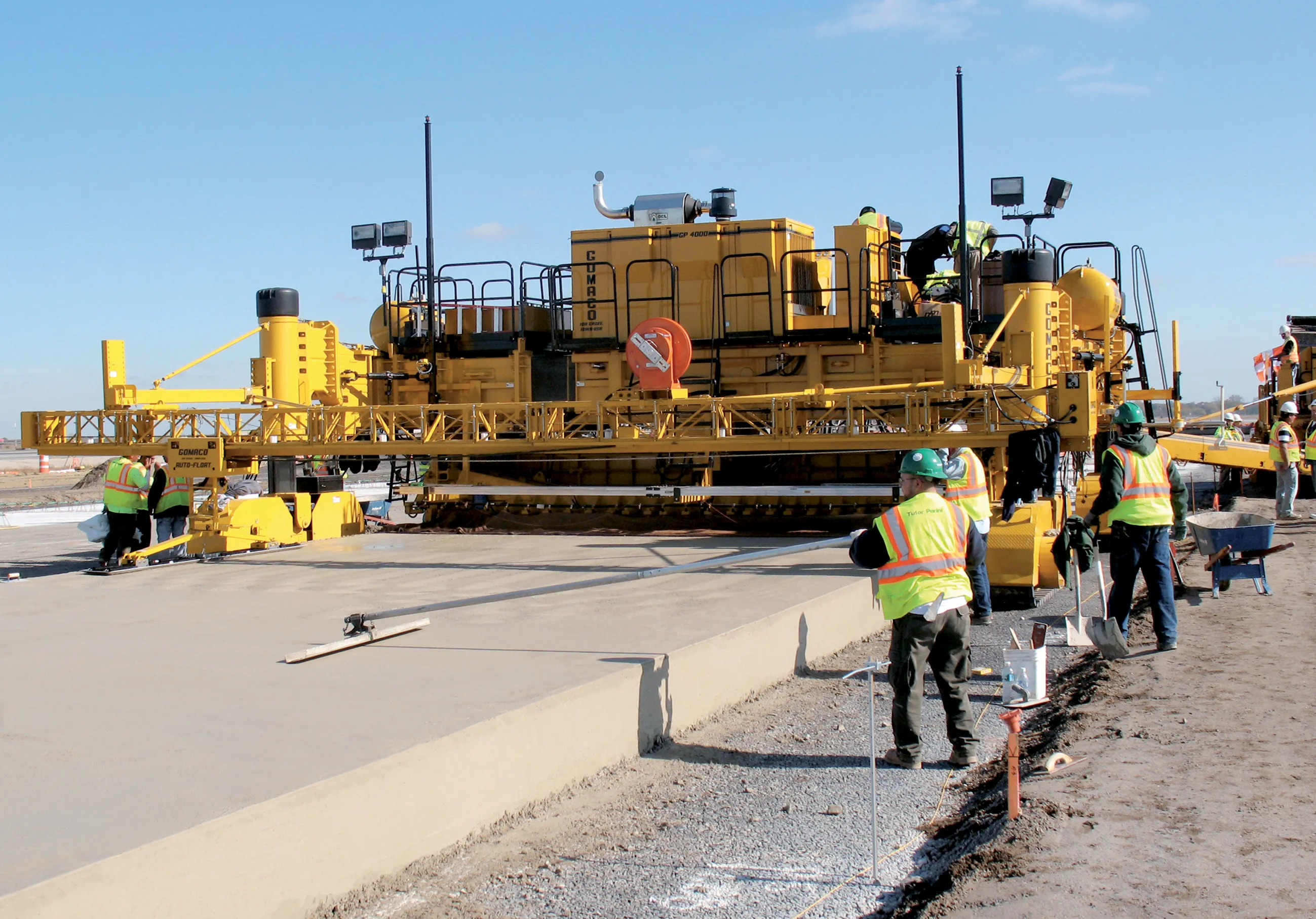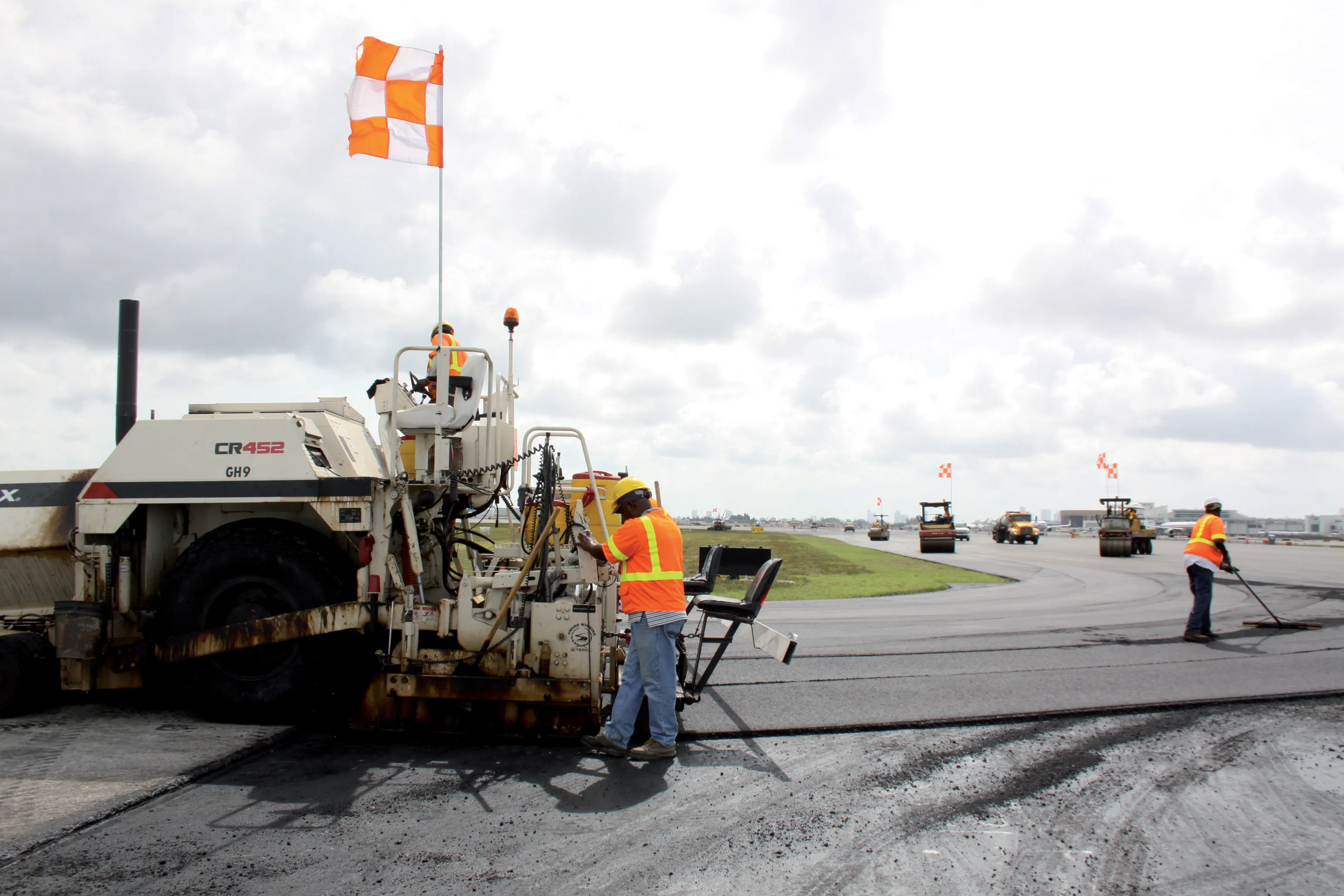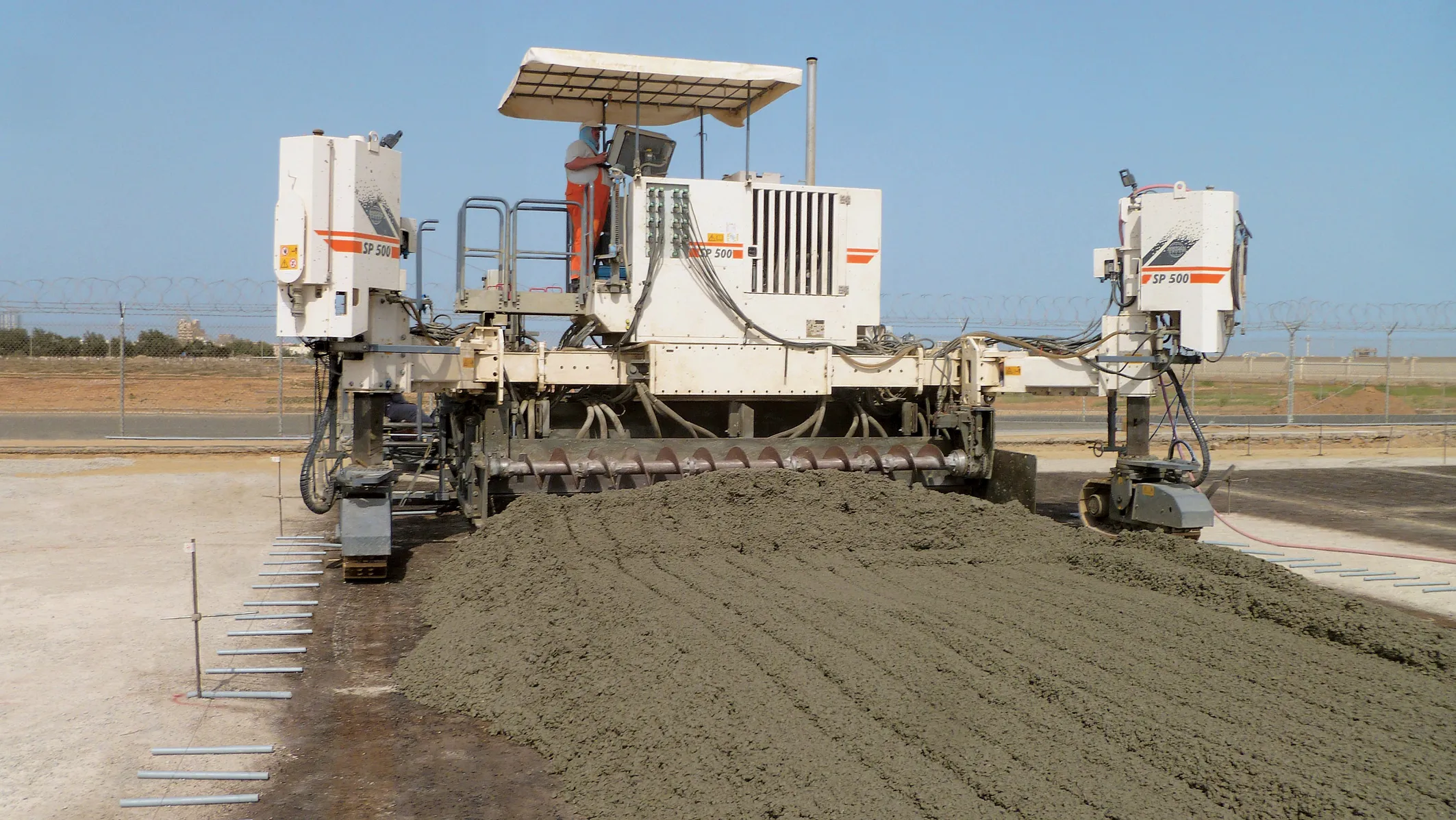A huge logistics operation has been carried out successfully at New York's JFK Airport.
One of the busiest runways at one of the world's busiest airports is now open to air traffic again, following a 120 day closure for resurfacing.
February 8, 2012
Read time: 4 mins

A huge logistics operation has been carried out successfully at New York's JFK Airport
2422 Port Authority of New York and New Jersey as well as the 2423 Federal Aviation Administration. The success of the project is also due to the efficiency of the contractors and construction crews working at the airport. Construction activity has carried on 24 hours/day, seven days/week so as to stay within the strict time deadlines of the project.
The revamped Bay Runway will be one of the largest in the world at over 4.4km long when all the work is finished at the end of 2011. The new runway is expected to reduce overall delays at the very busy JFK by some 10,500 hours in all, partly because it is being widened from 46-61m. The bulk of the runway expansion has now been completed with about 1.1km of runway work still remaining to be completed in the next two phases of the project.
The upgrade work is not limited to the runway either and will allow departing aircraft to bypass aeroplanes being held waiting to take-off, or which are taxiing. The two new high speed taxiways form an important part of the project as these improve aircraft handling and will help to reduce congestion at peak periods by allowing aircraft to taxi at 112km/h instead of the 32km/h as before. This will make substantial savings for the airlines in fuel and time costs and will also help reduce delays for passengers.
A key feature of the new runway is its concrete construction, which was selected by the authorities to extend the life of the surface and reduce overall maintenance costs for the airport. Because JFK carries a large volume of flights, with a large percentage of these being bigger aircraft making long journeys, the Bay Runway is subjected to exceptionally high structural loads and particularly during aircraft landings. This was taken into account when planning the upgrade as it was recognised that the new surface would have to cope with much higher loads than most airport runways. The new concrete surface is 4.572m thick and this is expected to give a service life of 40 years, compared with eight years for the asphalt surface. Over the long term this concrete construction method is expected to save the airport up to $500 million in the long run in maintenance costs.
Concrete slipforming equipment from218 Gomaco has been used on the project, using sophisticated construction techniques to ensure that the surface quality meets the tight specifications. Strict quality control has been applied to the concrete used and for the pavement as it is laid, to ensure that the Federal Airports Authority's (FAA) tight specification will be met. The runway features over 5,000 concrete slabs and each slab weighs over 70tonnes, with a total of 150,643m3 of concrete having been used for the project.
Two batching plants were set up at the airport to ensure a steady flow of concrete, with some 3,138m3/day being produced And as the batching plants were located on-site, this reduced the need for deliveries by truck, cutting 400/day vehicle movements from local roads. Having the batching plants on-site brought additional advantages too. It improved security, by reducing the vehicle movements on and off the airport during the working day and was beneficial to logistics for the contractors as it meant no trucks bringing concrete to the paving equipment risked being caught up in traffic.
Meanwhile the former asphalt surface is not being wasted, having been milled off the runway and recycled. In all 198,000tonnes of asphalt was milled off the old runway structure and this is being re-used for building access roads to the airport.
The upgrade work at JFK also includes building a new drainage system and installing electrical infrastructure (some 200km of electrical cabling), with this portion of the airport improvement having commenced in July 2009. About $15 million of the funding for this project is coming from the American Recovery and Reinvestment Act, $73 million from the FAA, and $200 million from the Port Authority. Construction of the Bay Runway directly provided around 1,000 jobs at its peak, with up to 2,500 involved including all the necessary ancillary work.
One of the busiest runways at one of the world's busiest airports is now open to air traffic again, following a 120 day closure for resurfacing. The Bay Runway at John F Kennedy Airport's longest runway, which handles about one-third of its international flights annually, re-opened on June 28th after closing in March for a renovation costing US$376 million. Although the runway's official name is R13/31L, this is called the Bay Runway because it runs alongside Jamaica Bay and the upgrade will allow it to handle the world's largest passenger aircraft, the Airbus A380, which is designed with a maximum take-off weight of 650tonnes.
The revamped Bay Runway will be one of the largest in the world at over 4.4km long when all the work is finished at the end of 2011. The new runway is expected to reduce overall delays at the very busy JFK by some 10,500 hours in all, partly because it is being widened from 46-61m. The bulk of the runway expansion has now been completed with about 1.1km of runway work still remaining to be completed in the next two phases of the project.
The upgrade work is not limited to the runway either and will allow departing aircraft to bypass aeroplanes being held waiting to take-off, or which are taxiing. The two new high speed taxiways form an important part of the project as these improve aircraft handling and will help to reduce congestion at peak periods by allowing aircraft to taxi at 112km/h instead of the 32km/h as before. This will make substantial savings for the airlines in fuel and time costs and will also help reduce delays for passengers.
A key feature of the new runway is its concrete construction, which was selected by the authorities to extend the life of the surface and reduce overall maintenance costs for the airport. Because JFK carries a large volume of flights, with a large percentage of these being bigger aircraft making long journeys, the Bay Runway is subjected to exceptionally high structural loads and particularly during aircraft landings. This was taken into account when planning the upgrade as it was recognised that the new surface would have to cope with much higher loads than most airport runways. The new concrete surface is 4.572m thick and this is expected to give a service life of 40 years, compared with eight years for the asphalt surface. Over the long term this concrete construction method is expected to save the airport up to $500 million in the long run in maintenance costs.
Concrete slipforming equipment from
Two batching plants were set up at the airport to ensure a steady flow of concrete, with some 3,138m3/day being produced And as the batching plants were located on-site, this reduced the need for deliveries by truck, cutting 400/day vehicle movements from local roads. Having the batching plants on-site brought additional advantages too. It improved security, by reducing the vehicle movements on and off the airport during the working day and was beneficial to logistics for the contractors as it meant no trucks bringing concrete to the paving equipment risked being caught up in traffic.
Meanwhile the former asphalt surface is not being wasted, having been milled off the runway and recycled. In all 198,000tonnes of asphalt was milled off the old runway structure and this is being re-used for building access roads to the airport.
The upgrade work at JFK also includes building a new drainage system and installing electrical infrastructure (some 200km of electrical cabling), with this portion of the airport improvement having commenced in July 2009. About $15 million of the funding for this project is coming from the American Recovery and Reinvestment Act, $73 million from the FAA, and $200 million from the Port Authority. Construction of the Bay Runway directly provided around 1,000 jobs at its peak, with up to 2,500 involved including all the necessary ancillary work.








